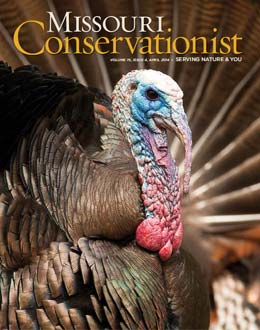John Miller spends a lot of time in St. Louis’ expansive Forest Park. His gaze is rarely upon the path in front of him. Instead, he’s looking up — for the iridescent purple birds darting hither and yon. Miller’s passion is supporting the growing population of purple martins that return to Forest Park each year to raise their young.
“For me, it’s just a wonderful way to enjoy nature, but it comes with a responsibility to the birds to do it the best I can,” says Miller. “It’s my way to become an amateur wildlife biologist, but mostly it’s just a thrill when martins return in spring.”
Purple martins have an annual migratory cycle that includes winter in the rainforests of the Amazon Basin and summer as far north as Canada. This large swallow has a long history of using man-made cavities, from hollow gourds to elaborate bird box apartments, and that’s what inspires Miller to share his purple martin skills.
Miller learned about purple martins from his grandfather and put up some of his own houses as a teenager. In 2005, he sought permission from the City of St. Louis Parks Department to erect a martin house in Forest Park, and eight pairs took up summer residence. Now there are purple martin houses on six poles located throughout the park.
“The colony has grown to about 65 pairs per season now, probably one of the largest colonies of martins in an urban park in North America,” says Miller.
Purple martins arrive in Missouri from March through May. The first arrivals are older male birds that defend potential nesting sites until they are paired with a female. The females arrive a few weeks after the males, with pairing occurring in May. After rearing their young, they begin southward migration early, with most departing by late August.
Purple martins throughout eastern North America mostly nest in human-provided housing or in man-made structures such as highway lights. Native Americans strung racks of nesting gourds to attract purple martins. Settlers in colonial America constructed large multi-compartment houses placed on poles and rooftop cupolas.
Proper placement of martin houses is vital. For purple martins, protection from predators is important. They seek open, treeless areas where they can avoid aerial predators. They forage for flying insects nearby over water and grasslands.
In addition to installing, cleaning, repairing, and improving martin houses at Forest Park, Miller monitors nest boxes to ensure they are not used by other species, and he provides supplemental feed during cold snaps and shade during summer heat waves.
Local volunteers help with nest monitoring, and staff from Probstein Golf Course and Forest Park Forever, a nonprofit organization dedicated to maintaining the St. Louis landmark, assist with maintenance chores throughout the season. Miller also speaks to the park’s bird-walk group at least once during the summer season and explains how he monitors the nest boxes.
Miller was instrumental in securing funding from Forest Park Forever, Probstein Golf Course, and local residents for the project. He also selected the birdhouse sites throughout the park and oversaw all of the installations. Miller was given a 2014 Keeper of the Park Award by Forest Park Forever for his efforts with purple martins.
The conservation efforts at Forest Park have forged new partnerships that will improve purple martin habitat for years to come.
“The purple martin is a flagship species. Everyone’s grandparents and great-grandparents watched out for these birds,” says Brad Jacobs, Conservation Department ornithologist. “This is a great example of citizen-led conservation truly making a difference.”
If the long-held tradition of providing housing for purple martins ceased, the martin population would crash, especially in areas where natural cavities are in short supply.
“This figures into why I personally encourage people to monitor boxes and protect nests from predators,” says Miller. “Some martin hobbyists erect housing and let the birds do the rest. A little protection can help the martins raise their broods.”
“It connects us to something much bigger than our backyards,” says Miller, “essentially to the amazing biology of the entire planet.”
How To Become A Purple Martin “Landlord”
Potential purple martin landlords need to select the right location. Adequate open space is essential, and the housing should be placed in proximity to human activity, generally no further than about 100 to 200 feet from a building.
The most important element is having open flyways on at least two, and preferably three, sides of the housing unit. Martins like to approach their housing like airplanes, not helicopters, says Miller. Often people erect gourds or martin houses in a yard they assume is open enough, but if it is ringed by woods some distance back on three sides it is not likely to attract the birds. A few scattered trees may not pose a problem, but martins like unobstructed flyways.
An interested hobbyist probably should not erect housing without planning and committing to care for it. It might attract a pair or two of martins, but likely will never host a thriving colony of martins.
Purple martin nest boxes or gourds may not be successful if lots of house sparrows are present in the area.
Martins also sometimes suffer from wet nests, infestations of mites, predation from rat snakes or raccoons, owls, and Cooper’s hawks and will subsequently abandon a location.
Learn More About Purple Martins
- Download the Conservation Department’s purple martins brochure at mdc.mo.gov/node/9778. Or request your free copy by calling toll free 877-521-8632.
- The book Birds in Missouri, by Brad Jacobs, is available from the Conservation Department’s Nature Shop ($30 plus shipping) by calling toll free 877-521-8632 or by ordering online at mdcnatureshop.com.
- Visit the Purple Martin Conservation Association online at purplemartin.org.
- Learn more about the Conservation Department’s full life-cycle bird conservation efforts at mdc.mo.gov/node/23145.
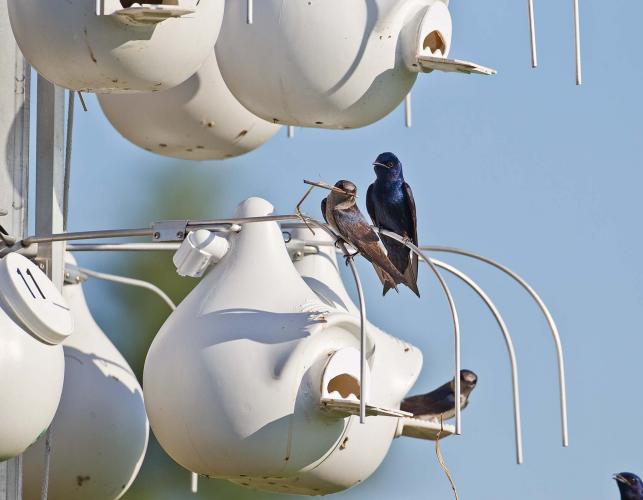

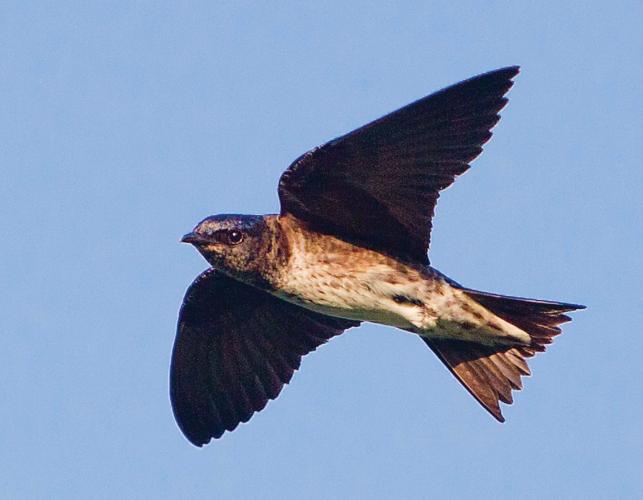
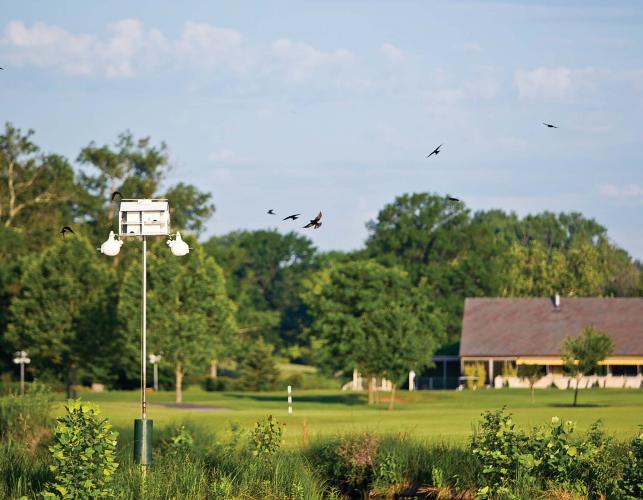

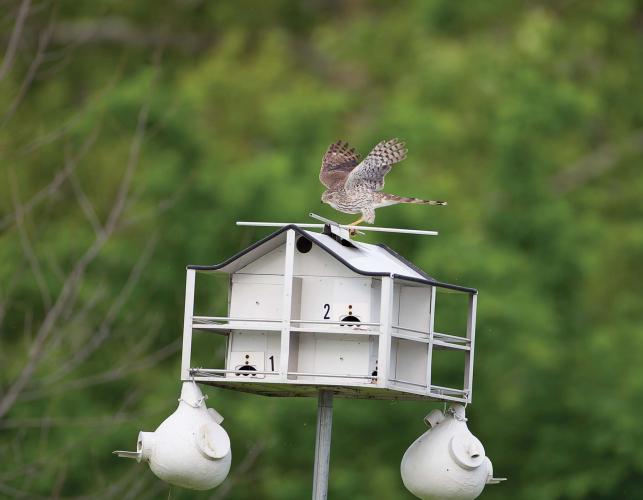
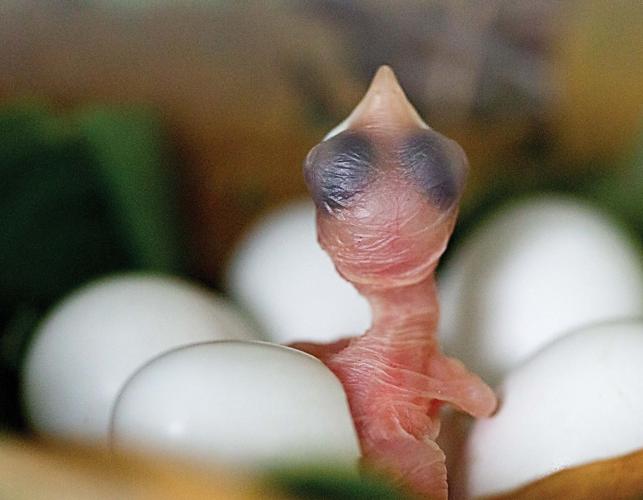
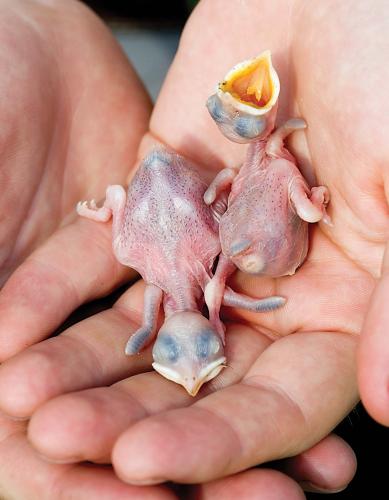
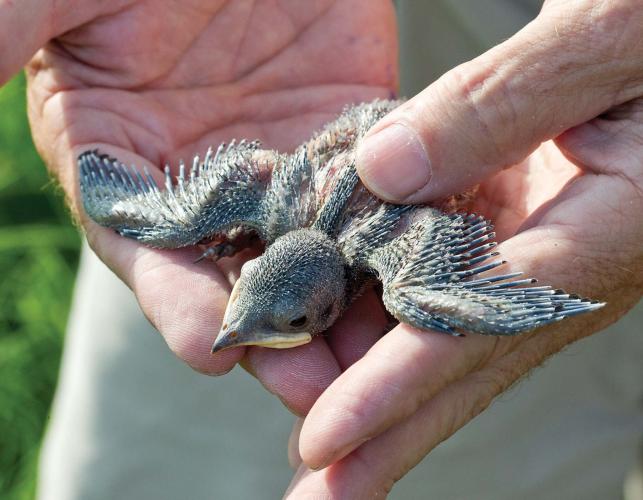
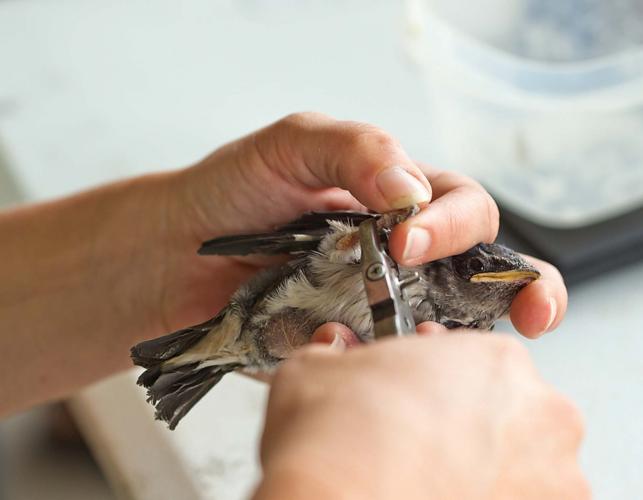
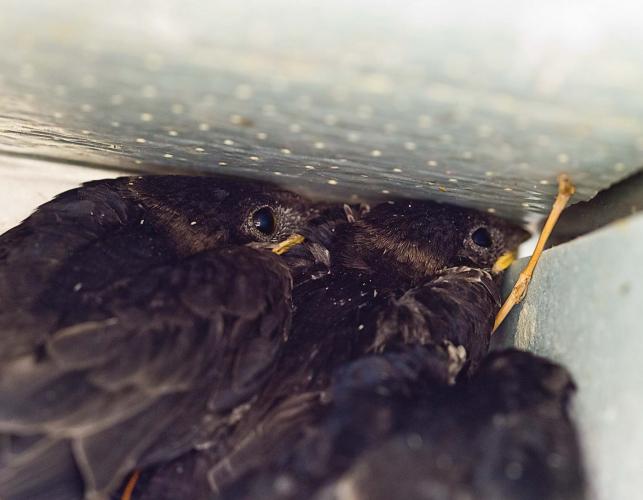
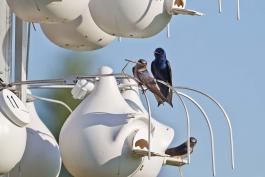
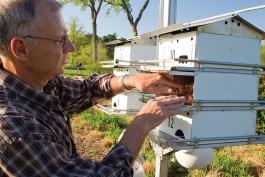
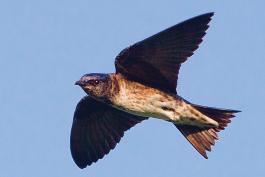
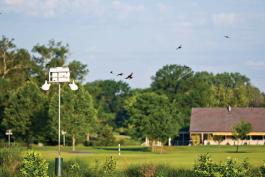
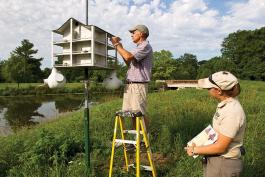
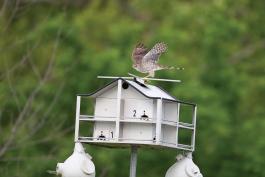
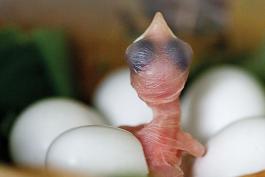
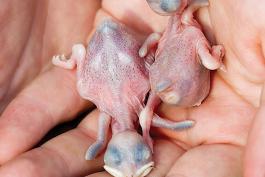
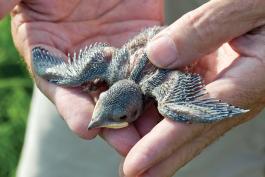
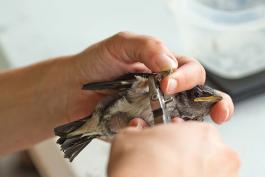
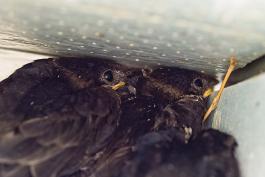
Also In This Issue

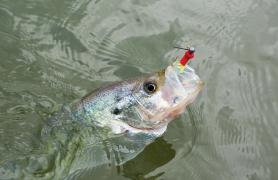
And More...
This Issue's Staff
Managing Editor - Nichole LeClair Terrill
Art Director - Cliff White
Staff Writer/Editor - Brett Dufur
Staff Writer - Jim Low
Photographer - Noppadol Paothong
Photographer - David Stonner
Designer - Stephanie Thurber
Circulation - Laura Scheuler






















